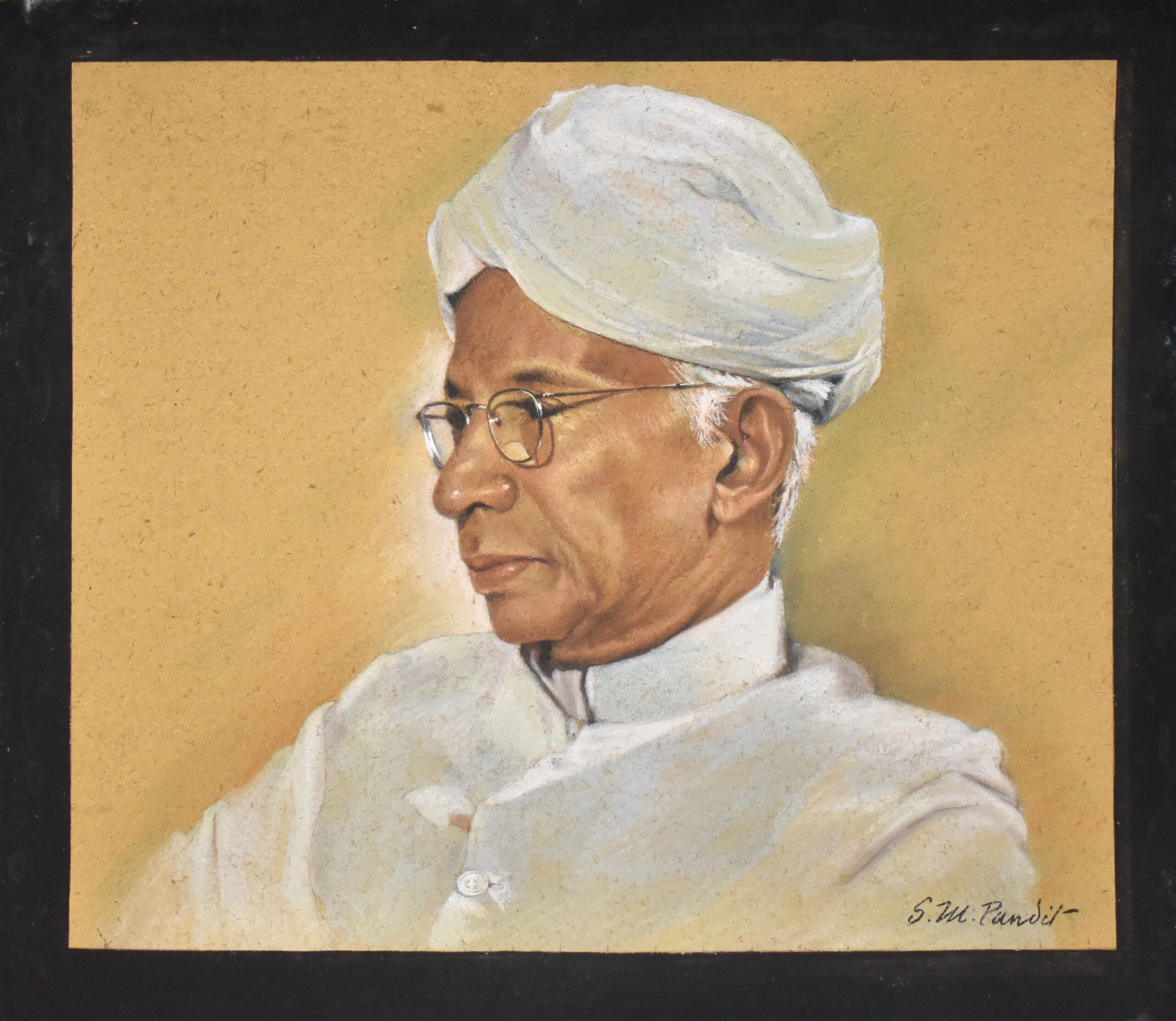Dr. Sarvepalli Radhakrishnan (1888 – 1975)
Academician and former President of India
Artist S. M. Pandit (1916 – 1993)
circa 1970, Oil on card board
20.1 x 23.2 in. (51.1 x 58.9 cm.)
The three portraits shown—of Dr. S. Radhakrishnan, Mahatma Gandhi, and Joseph Rudyard Kipling—are fine examples of the accomplished work of S.M. Pandit. He was one of the most successful and versatile portrait painters in mid-20th century India. Known for his photographic realism and mastery over pastel and watercolour media, Pandit was adept at capturing the likeness and dignity of public figures. This made him a favorite for commissioned portraits during the post-independence era.
The portrait of Dr. S. Radhakrishnan, India’s President in 1970, was painted on strawboard—a surface typically used for packaging. Pandit’s treatment, however, transforms this humble material into a refined surface through his soft, glowing palette and meticulous rendering. The halo-like glow around the figure and the delicate highlights on the turban and spectacles emphasize intellect and calm authority.
The 1948 portrait of Mahatma Gandhi, likely painted shortly after Gandhi’s assassination, captures a deep emotional stillness and reverence. The soft, sepia-toned palette and Gandhi’s slightly hunched posture convey his humility, spiritual strength, and the sorrow felt nationwide. Pandit’s restrained approach emphasizes Gandhi’s quiet dignity rather than heroic grandeur. Possibly created for memorial or publication use, the image reflects the mourning and respect that followed Gandhi’s death. In later years, Pandit revisited this composition on a larger scale in oil on canvas.
The portrait of Rudyard Kipling, done around 1940, is an unusual commission. The reason being that Kipling died in 1936 and Pandit only began his career around 1938–39. This suggests the portrait may have been created for a colour publication, painted over a blackand- white photograph—an early example of photo-enhancement for illustrated media. The composition, posture, and folded scroll indicate a sense of scholarly formality.
S.M. Pandit, originally from Maharashtra, began his career as a commercial artist and illustrator. His early assignments often involved calendar art and film publicity, but he soon became known for his formal portraiture of politicians, aristocrats, and cultural figures. His style combined academic naturalism with a subtle idealism. Using soft transitions of light and careful attention to facial structure, his portraits often imbued the sitter with a dignified, almost iconic quality.
Pandit’s legacy lies in his ability to bridge commercial and fine art—producing works that were both accessible and refined. His portraits, like these three, function not only as likenesses but as visual tributes. They preserve the aura of individuals central to India’s political and literary histories.
